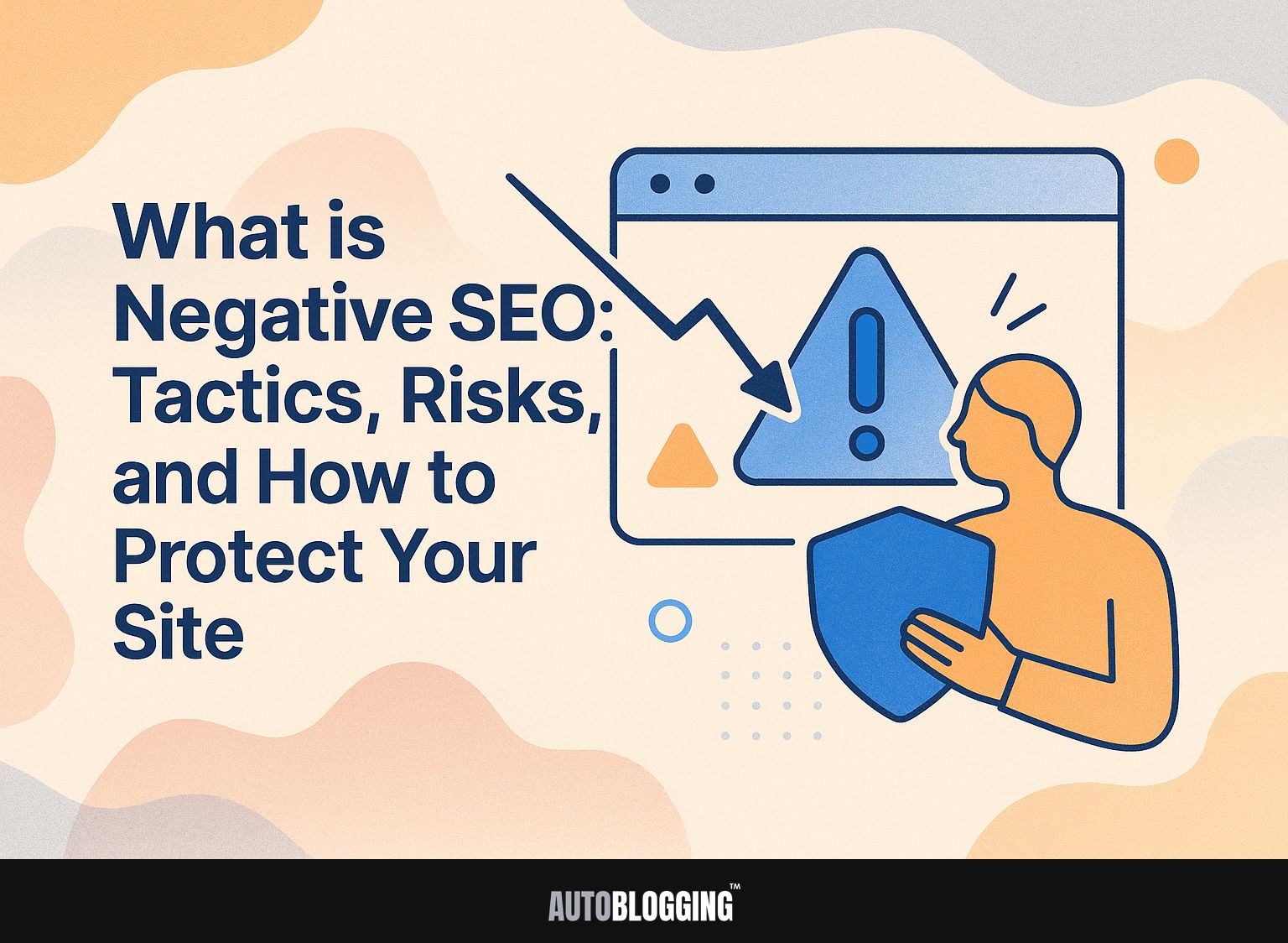
In the competitive world of SEO, the threat of Negative SEO looms large, targeting your search traffic and undermining your site’s credibility. As competitors exploit tactics like link spam and content scraping, the risk of Google penalties becomes real, especially following updates like Penguin. This article explains Negative SEO, showing its methods, risks, and ways to protect your website from harmful attacks. Don’t let your hard-earned rankings slip away!
Key Takeaways:
- Negative SEO involves harmful methods aimed at damaging a website’s position in search results, reducing visitor numbers, and hurting its reputation.
- Common tactics include creating spammy links, copying content, posting fake reviews, and manipulating social media, which can seriously damage a site’s presence online.
- To protect your site, regularly monitor for signs of negative SEO attacks, build a strong backlink profile, and implement security measures. If you are attacked, act quickly and think about getting help from a professional.
Contents
- Common Tactics Used in Negative SEO
- Risks of Negative SEO
- Identifying Negative SEO Attacks
- How to Protect Your Site from Negative SEO
- Responding to Negative SEO Attacks
- Frequently Asked Questions
- 1. What is Negative SEO and why should I be concerned?
- 2. What are some common tactics used in Negative SEO?
- 3. What are the risks of being a target of Negative SEO?
- 4. Can Negative SEO be detected and prevented?
- 5. What are some ways to protect my site from Negative SEO?
- 6. What should I do if my site has been targeted by Negative SEO?
1. Definition of Negative SEO
Negative SEO involves using dishonest methods to lower a website’s search ranking, such as creating poor-quality backlinks and copying content.
Recent studies indicate that approximately 30% of websites have experienced negative SEO attacks, highlighting the prevalence of this issue.
For instance, major brands like eBay and the New York Times have reported suffering from significant ranking drops due to malicious activities by competitors.
Protecting your site from negative SEO requires proactive measures:
- Regularly monitor your backlink profile with tools like Ahrefs or SEMrush,
- Disavow suspicious links,
- Maintain quality content to build authority.
This helps safeguard your rankings against harmful tactics.
2. Historical Context
The rise of Negative SEO can be traced back to the implementation of Google’s Penguin algorithm in 2012, which targeted manipulative linking practices.
This update led bad actors to take advantage of its strict rules, using methods like spammy backlinks to hurt competitors’ rankings.
For instance, in 2014, a well-known e-commerce site saw significant drops in traffic after being the target of a Negative SEO campaign. Hundreds of low-quality links were pointed to their domain, triggering penalties.
To address this, companies should regularly check their backlink profiles using tools like Ahrefs or Google Search Console. This helps quickly remove or reject harmful links, which safeguards their rankings.
Common Tactics Used in Negative SEO
Negative SEO uses different methods to damage a website’s performance, each carrying unique risks and effects on how visible the website is online.
1. Link Spam and Toxic Backlinks
Link spam is the act of creating poor-quality links to a website, which can result in harsh penalties from Google.
A recent survey revealed that 50% of website owners have faced link spam issues, highlighting the need for vigilance.
Tools like Ahrefs can be extremely helpful in dealing with this. Ahrefs enables users to identify toxic backlinks by analyzing their site’s link profile and offers a toxic score for each backlink.
After finding harmful links, use Google Search Console to disavow them and reduce any possible harm. Checking your backlinks regularly keeps them effective.
2. Content Scraping and Duplication
Content scraping involves copying material from a target website, leading to duplicate content issues that can affect SEO rankings. This practice can lead to serious punishments from Google, which can greatly decrease how often your site appears in search results.
For instance, sites like ‘ExampleSite.com’ faced drops of up to 80% in their organic traffic due to repeated scraping incidents.
To safeguard against these risks, using tools like Copyscape is essential. It allows you to monitor your content for duplicates online, alerting you when scrapers take your work. Regular checks help maintain your content integrity and protect your SEO health.
3. Fake Reviews and Reputation Damage
Fake reviews are a common tactic used in Negative SEO, where competitors post malicious feedback to damage a brand’s reputation. These dishonest practices can hurt local SEO rankings and damage customer trust.
To combat this, regularly monitor your online reputation using tools like Google My Business and SEMrush.
Google My Business allows you to respond directly to reviews, helping mitigate negative feedback and showcase excellent customer service. SEMrush, however, gives you information about how your competitors handle reviews.
Check feedback weekly and respond promptly. This shows your dedication to keeping customers happy and protects your online reputation.
4. Social Media Manipulation
Social media manipulation can increase the harmful effects of Negative SEO, as false stories or damaging content can quickly spread across platforms.
To counteract this, businesses should monitor social conversations closely. Tools like Brand24 and Mention can help track brand mentions and assess sentiment in real-time.
For instance, setting up alerts for your brand name can immediately notify you of any negative trends or emerging stories. Talking to users on platforms like Twitter can reduce possible problems and help create a positive story.
Studies indicate that companies that quickly address negative feedback experience a 40% reduction in reduced interaction. Actively controlling your brand’s online reputation is important in today’s internet environment.
Risks of Negative SEO
Negative SEO can cause major problems, hurting both search engine rankings and potentially reducing revenue and damaging brand reputation.
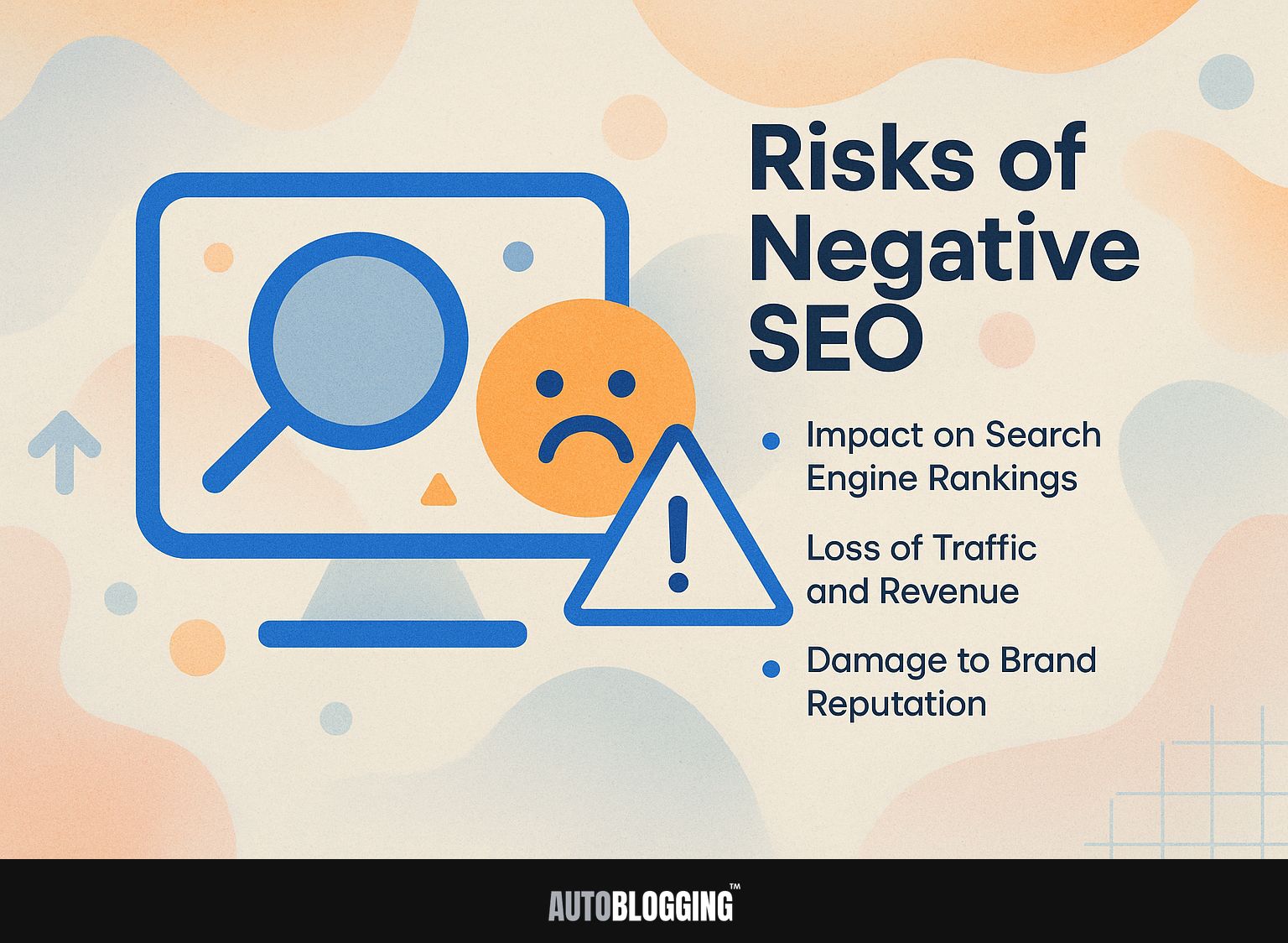
1. Impact on Search Engine Rankings
Negative SEO can lead to drastic drops in search engine rankings, often resulting in significant loss of organic traffic.
On average, businesses can experience a 30-50% decrease in their organic search traffic due to negative SEO tactics, such as spammy backlinks or malicious content.
For instance, a local restaurant saw its Google ranking plummet from the first page to page five after competitors employed fake reviews and low-quality link strategies.
To address this issue, businesses should frequently check their backlink profiles with tools like Google Search Console or Ahrefs. This lets them quickly reject bad links and regain their reputation.
2. Loss of Traffic and Revenue
Negative SEO can greatly harm a business, causing a drop in traffic and revenue by as much as 70%.
For instance, a prominent e-commerce site suffered a staggering 50% drop in organic traffic following a Negative SEO attack, attributed to toxic backlinks pointing to their domain. This decline directly translated to an estimated $100,000 monthly revenue loss.
To mitigate such risks, businesses should regularly monitor their backlink profiles using tools like SEMrush or Ahrefs, which can alert them to any suspicious activity. Using a strong disavow strategy can safeguard legitimate SEO work, so harmful activities have little effect.
3. Damage to Brand Reputation
Negative SEO can irreparably damage a brand’s reputation, resulting in lasting effects on customer trust and loyalty.
A notable case is that of a national furniture retailer, which faced a malicious attack that led to a significant decline in its search rankings. Customers began to voice concerns over the legitimacy of the brand, causing a drop in sales.
To recover, the company launched a thorough investigation, identified the sources of the negative links, and requested Google to disavow them. They revamped their marketing strategy by focusing on transparency, engaging directly with customers through social media, and highlighting positive user experiences.
Trust was slowly restored, showing the value of quick and truthful actions.
Identifying Negative SEO Attacks
To fix Negative SEO attacks quickly, it’s important to know the warning signs and use good tracking tools.
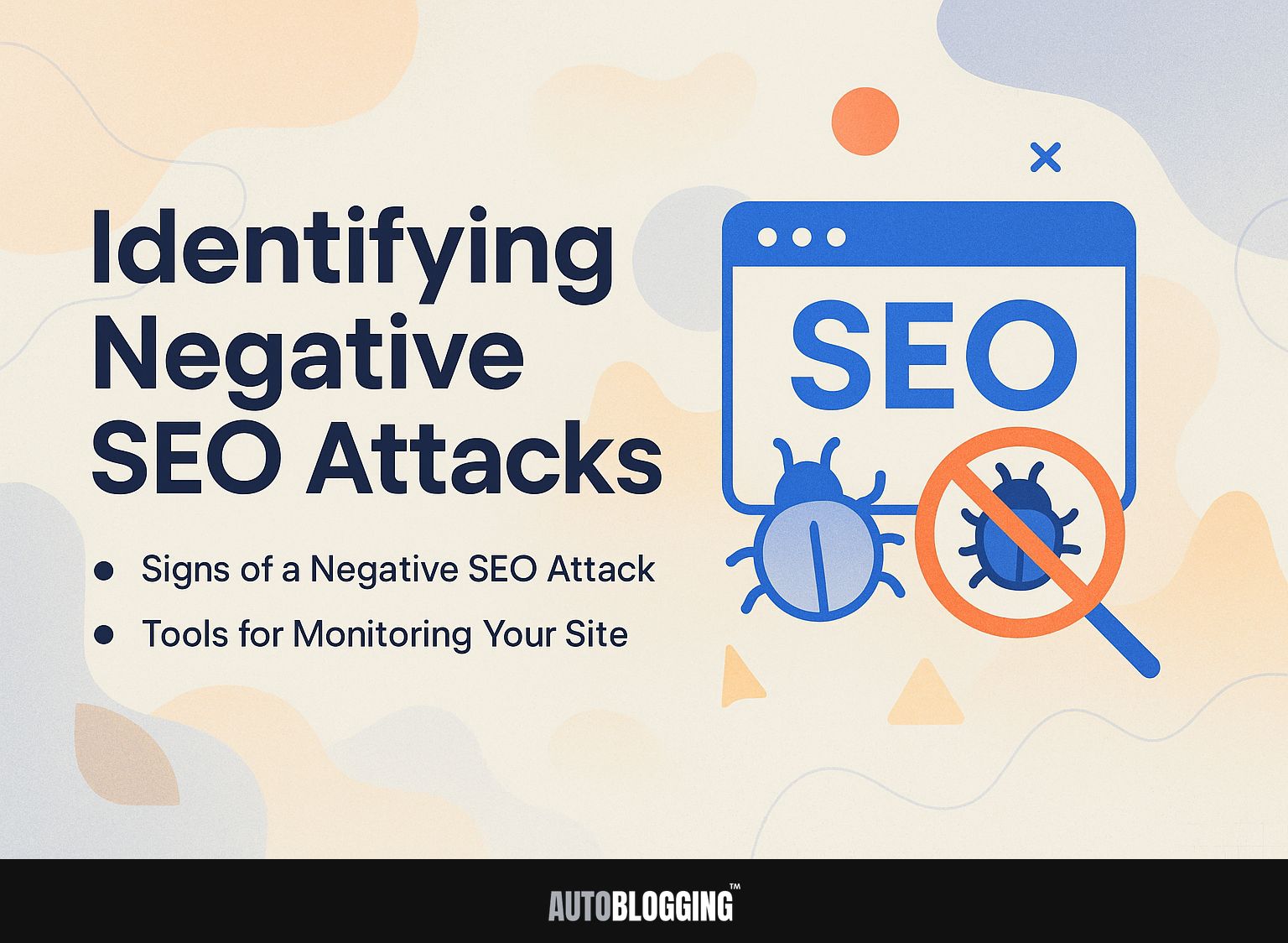
1. Signs of a Negative SEO Attack
Key indicators of a Negative SEO attack include sudden drops in rankings, unexplained spikes in spammy backlinks, and the emergence of duplicate content.
Additional signs to monitor include receiving low-quality or irrelevant backlinks, unusual changes in your website’s traffic patterns, and negative reviews appearing from unknown sources.
If your site experiences a rise in 404 errors or if your page speed unexpectedly decreases, these may signal an attack.
To follow these changes carefully, try using tools like Google Search Console to check backlink profiles and Ahrefs for detailed site checks. Regularly reviewing these metrics helps safeguard your site’s integrity.
2. Tools for Monitoring Your Site
Effective monitoring tools like Google Search Console and SEMrush can help detect signs of Negative SEO before they escalate.
For detailed tracking, look into tools like Ahrefs, Moz, and Serpstat.
- Ahrefs ($99/mo) specializes in examining backlinks, which helps spot unexpected link trends.
- Moz Pro ($99/mo) offers domain authority tracking.
- Serpstat ($69/mo) provides keyword monitoring and site audits.
To set up alerts, use Google Alerts for specific keywords related to your brand. Simply enter the terms you wish to monitor, choose `create alert,’ and tailor the frequency to receive timely updates on any suspicious activities that could threaten your site’s integrity.
How to Protect Your Site from Negative SEO
It’s important to prepare in advance to keep your website safe from negative SEO techniques by focusing on managing backlinks and implementing security steps. If you’re interested in preventing penalties, you might want to check out our guide on the Google Unnatural Links Penalty (New Godlike Mode).
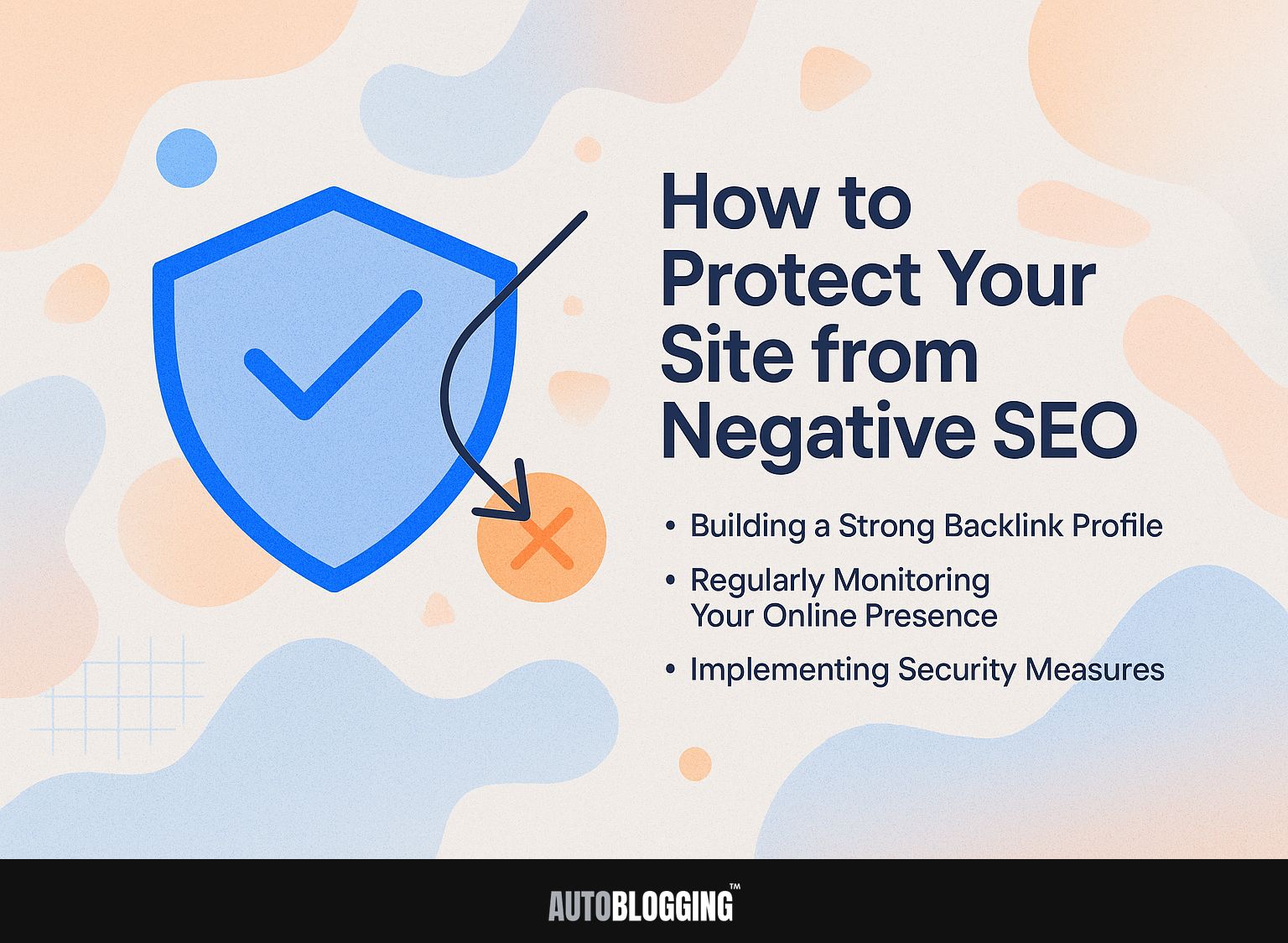
1. Building a Strong Backlink Profile
A reliable set of backlinks can defend against harmful SEO practices. Regular checks and assessments are necessary to maintain their quality.
To build a solid set of backlinks, begin by checking your existing backlinks with tools such as Ahrefs or SEMrush. Identify toxic links and disavow them.
Next, focus on obtaining high-quality links by producing interesting content, participating in guest blogging, and using outreach tools like BuzzStream. For instance, if you write a detailed industry report, share it with influencers in your field to gain links.
Consistently monitoring your backlinks will help you maintain a healthy profile and protect your site from potential threats.
2. Regularly Monitoring Your Online Presence
Regularly monitoring your online presence can help you spot potential Negative SEO threats early, preserving your brand’s reputation.
To effectively manage your online reputation, implement a structured schedule. Each day, check reviews on Google My Business and Yelp so you can reply to customer comments quickly.
Use Google Alerts to receive immediate notifications about mentions of your brand. Each week, review your backlinks using tools such as Ahrefs or SEMrush. These tools let you review the links directing to your site to see if they are useful and related. This method protects your reputation and gives you the ability to quickly address new risks.
3. Implementing Security Measures
Having strong security, like SSL certificates and firewalls, is essential to protect your website from Negative SEO threats.
To improve your website’s security, think about using Cloudflare for DDoS protection. The Pro plan begins at $20 per month.
Regularly scanning for malware is important. You can use tools like Sucuri, which offer plans starting at about $199 per year.
Encrypting your website with an SSL certificate, costing approximately $10 to $200 per year, helps secure data transfer.
Regularly updating your CMS and plugins is important because outdated systems are easy targets for attackers.
Responding to Negative SEO Attacks
Acting fast on Negative SEO attacks can reduce harm and help bring back your website’s search ranking. If you’re looking to bolster your overall SEO strategy, consider these strategies to thrive in AI-dominated search landscapes.
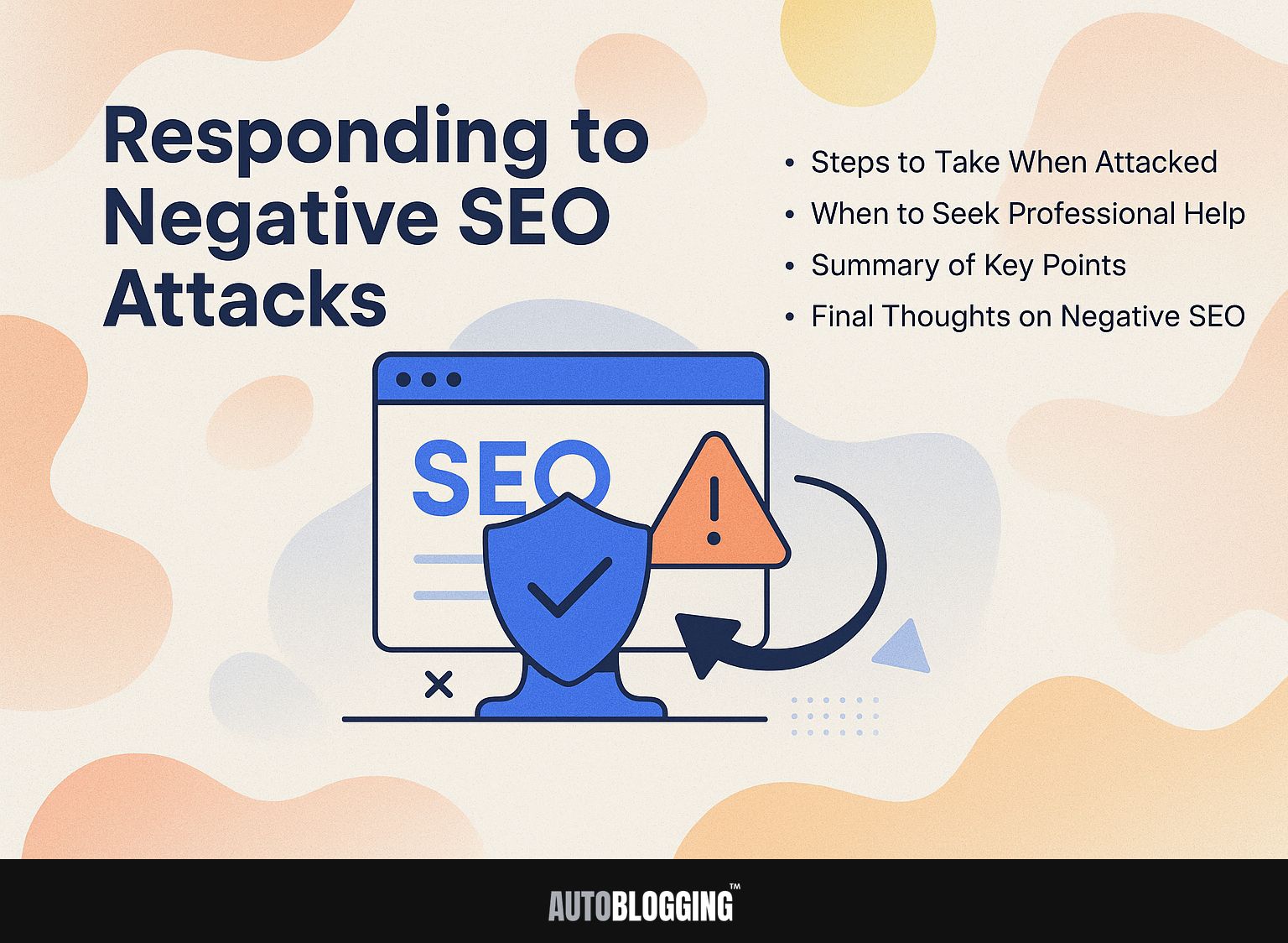
1. Steps to Take When Attacked
When faced with a Negative SEO attack, immediate steps include documenting the attack, analyzing backlinks, and addressing duplicate content.
- First, document the specifics of the attack, noting when it began and any unusual fluctuations in traffic.
- Then, use tools like Google Search Console to analyze your backlinks, identifying any new or suspicious links.
- You can use tools like Ahrefs or SEMrush to quickly reject bad backlinks.
- Address duplicate content by using canonical tags, ensuring search engines understand which version to prioritize.
- Try to finish this first response within 48 hours to reduce harm and begin fixing things properly.
2. When to Seek Professional Help
If the effects of Negative SEO are overwhelming, it may be time to consult with SEO professionals who specialize in recovery strategies.
Signs that you need professional help include:
- A sudden drop in search rankings
- Unexpected traffic loss
- Receiving unnatural link warnings from Google
Well-known agencies like WebFX, with services starting at about $1,000, offer complete recovery plans customized to your site’s requirements.
Another option is Screaming Frog, offering audits that can identify harmful backlinks, typically costing around $500.
Investing in these professional services can help restore your site’s authority and mitigate previous damage, ensuring a more sustainable online presence.
3. Summary of Key Points
Negative SEO includes harmful methods that can greatly lower website rankings and damage brand reputation.
To combat Negative SEO, take proactive measures like monitoring your backlinks regularly using tools like Ahrefs or SEMrush.
Create Google Alerts for your brand name to quickly find any negative comments. If you detect harmful links, disavow them through Google’s Disavow tool.
Think about improving your online presence by asking for positive reviews and creating high-quality content that shows your skills. These steps protect your rankings and strengthen your brand’s reputation in an active way.
4. Final Thoughts on Negative SEO
As the internet evolves, it’s important for every website owner to have solid methods to combat Negative SEO to achieve long-term success.
- To combat Negative SEO, start by monitoring your backlink profile using tools like Ahrefs or SEMrush to identify suspicious links.
- Regularly audit your website for any hacks or vulnerabilities with services like Sucuri.
- Create a forward-thinking content plan-sharing well-written, unique articles can improve your standing.
- Make use of Google’s Disavow Tool to disassociate from harmful links.
- As Negative SEO strategies become more advanced, staying informed and ready to change is key in protecting your online presence.
Frequently Asked Questions
1. What is Negative SEO and why should I be concerned?
Negative SEO is the use of malicious tactics to harm a website’s search engine rankings and overall online presence. This can seriously damage a site’s reputation and result in loss of traffic and customers. It’s important to stay vigilant and protect your site from these attacks.
2. What are some common tactics used in Negative SEO?
Some common tactics used in Negative SEO include creating spammy backlinks, hacking a website, stealing content, and creating fake negative reviews. These tactics are meant to harm a site’s credibility and manipulate search engine algorithms to lower its rankings.
3. What are the risks of being a target of Negative SEO?
The risks of being a target of Negative SEO include a decrease in search engine rankings, loss of website traffic, and a damaged reputation. This can lead to a significant loss of revenue and affect the overall success of a website or business.
4. Can Negative SEO be detected and prevented?
Yes, Negative SEO can be detected and prevented through regular monitoring of your website’s backlinks and website security. It’s important to stay informed about current tactics used in Negative SEO and actively work to protect your site from potential attacks.
5. What are some ways to protect my site from Negative SEO?
To protect your site from Negative SEO, it’s important to regularly monitor your backlink profile, secure your website against hacking attempts, and regularly check for duplicate content. Creating a strong and trustworthy online presence can reduce the effect of Negative SEO tactics.
6. What should I do if my site has been targeted by Negative SEO?
If you suspect your site has been targeted by Negative SEO, it’s important to act quickly and take steps to identify and remove any harmful tactics. You should contact Google and other search engines for help in fixing any damage to your site’s search rankings.
